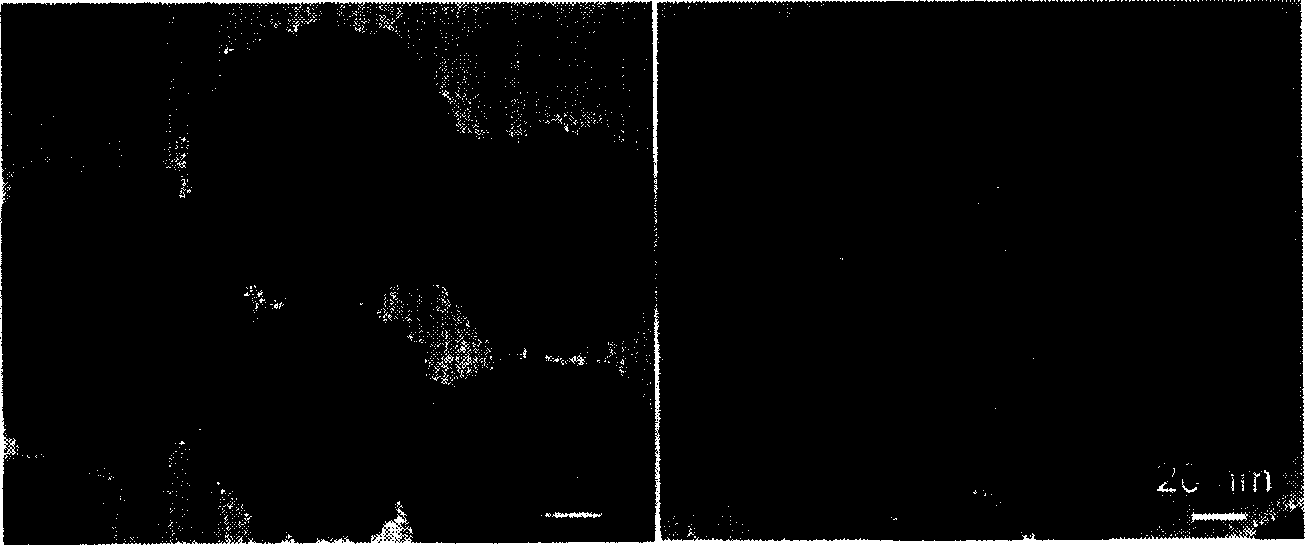Noble metal carrier catalyst, preparing method and applications thereof
A supported catalyst, precious metal technology, applied in metal/metal oxide/metal hydroxide catalysts, organic chemical methods, chemical instruments and methods, etc., can solve problems such as difficulty in ensuring the adsorption of precious metal nanoparticles, and achieve simple preparation, Wide-ranging and universal effects
- Summary
- Abstract
- Description
- Claims
- Application Information
AI Technical Summary
Problems solved by technology
Method used
Image
Examples
preparation example Construction
[0035] The preparation method of the noble metal supported catalyst involved in the present invention comprises the following steps:
[0036] (a) preparing a titanium dioxide precursor rich in hydroxyl groups on the surface;
[0037] (b) mixing the titanium dioxide precursor dispersion with the stannous salt solution, stirring for about ten minutes, centrifuging and washing several times, and then dispersing the precursor into water;
[0038] (c) In the case of stirring, add a noble metal soluble salt solution to the above-mentioned titanium dioxide precursor dispersion treated with a stannous salt solution; in order to ensure that the noble metal salt can be completely reduced and improve the loading capacity of the catalyst, add the noble metal salt solution Afterwards, a reducing agent can also be added to the solution system;
[0039] (d) Continue to stir for several hours, centrifuge and wash several times, and dry the precipitate to obtain the desired noble metal-suppor...
Embodiment 1
[0051] Embodiment 1: preparation 15wt% palladium supported catalyst
[0052] Preparation of hydroxyl-rich titanium dioxide precursor (titanium glycolate): 2.7 mL of water and 170 mL of acetone were mixed to obtain solution A. Add 2mL of tetrabutyl titanate into 50mL of ethylene glycol, stir at room temperature for 8h, then pour into the above solution A, continue stirring for 1h, wash the obtained precipitate with ethanol several times and dry it at about 60°C, namely A hydroxyl-rich titanium dioxide precursor (titanium glycolate) is available.
[0053] Preparation of palladium-supported catalyst with loading capacity of 15wt%: disperse 0.1g titanium dioxide precursor into 20mL deionized water, stir for about 10min, then add to 20mL solution containing 0.1g stannous chloride, continue stirring for 10min, centrifuge Separate and wash with deionized water 5 times, and then disperse the washed precipitate into 40 mL of deionized water. While stirring, add 2.5 mL of palladium ch...
Embodiment 2
[0054] Embodiment 2: preparation 3wt% palladium supported catalyst
[0055] Preparation of hydroxyl-rich titanium dioxide precursor (titanium glycolate): The titanium dioxide precursor was prepared according to the same procedure as in Example 1, but tetrabutyl titanate was replaced by tetraethyl titanate.
[0056] Preparation of a palladium-supported catalyst with a loading amount of 3 wt %: According to the same procedure as in Example 1, the amount of palladium chloride solution added was 0.5 mL (0.056 M).
[0057] Similarly, when the add-on of palladium chloride solution is 5mL (0.056M), the palladium supported catalyst that obtains loading is 30wt%
PUM
| Property | Measurement | Unit |
|---|---|---|
| Diameter | aaaaa | aaaaa |
Abstract
Description
Claims
Application Information
 Login to View More
Login to View More - R&D
- Intellectual Property
- Life Sciences
- Materials
- Tech Scout
- Unparalleled Data Quality
- Higher Quality Content
- 60% Fewer Hallucinations
Browse by: Latest US Patents, China's latest patents, Technical Efficacy Thesaurus, Application Domain, Technology Topic, Popular Technical Reports.
© 2025 PatSnap. All rights reserved.Legal|Privacy policy|Modern Slavery Act Transparency Statement|Sitemap|About US| Contact US: help@patsnap.com



